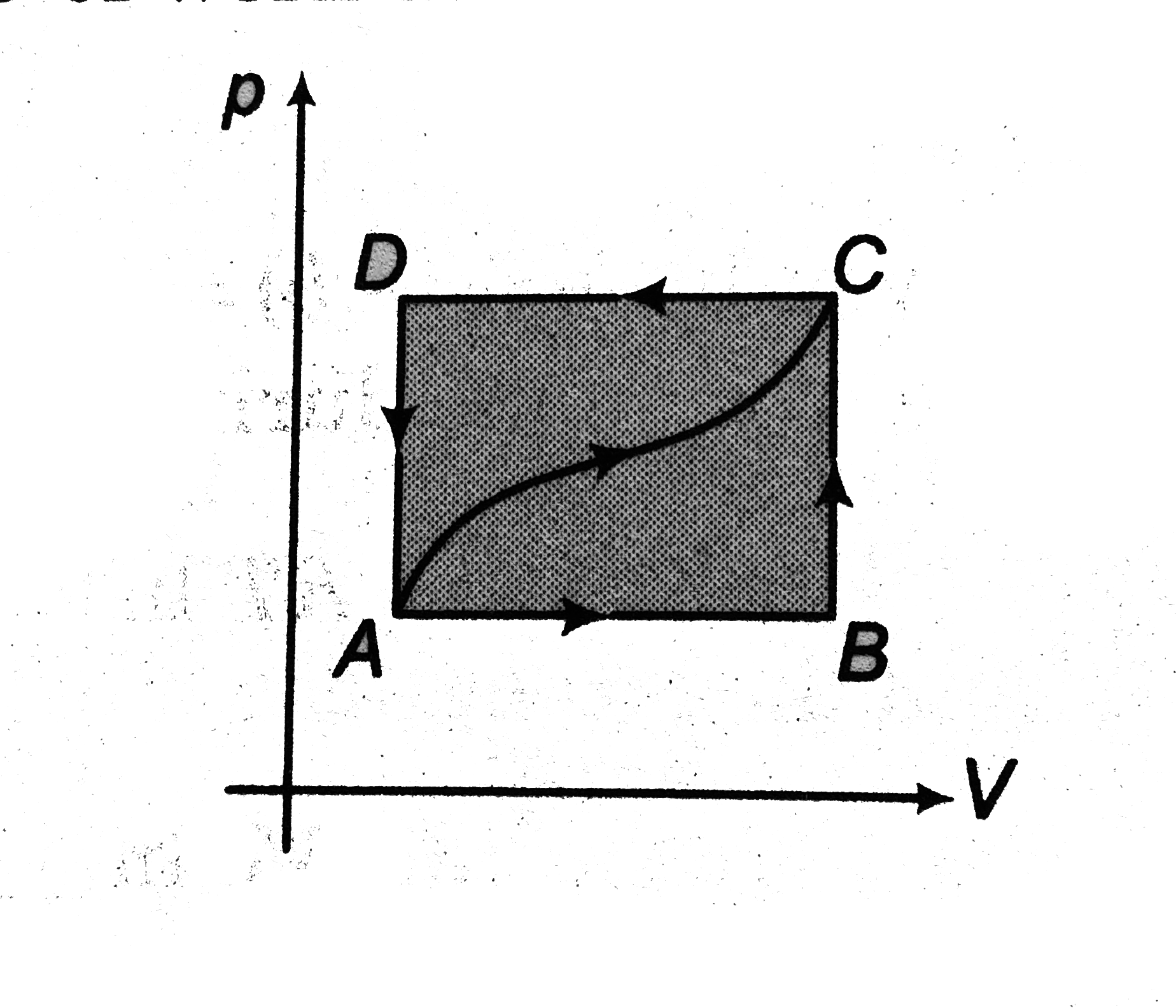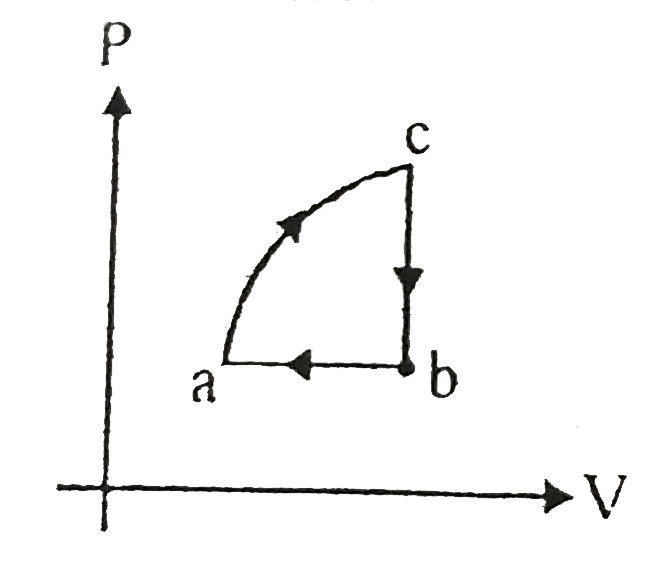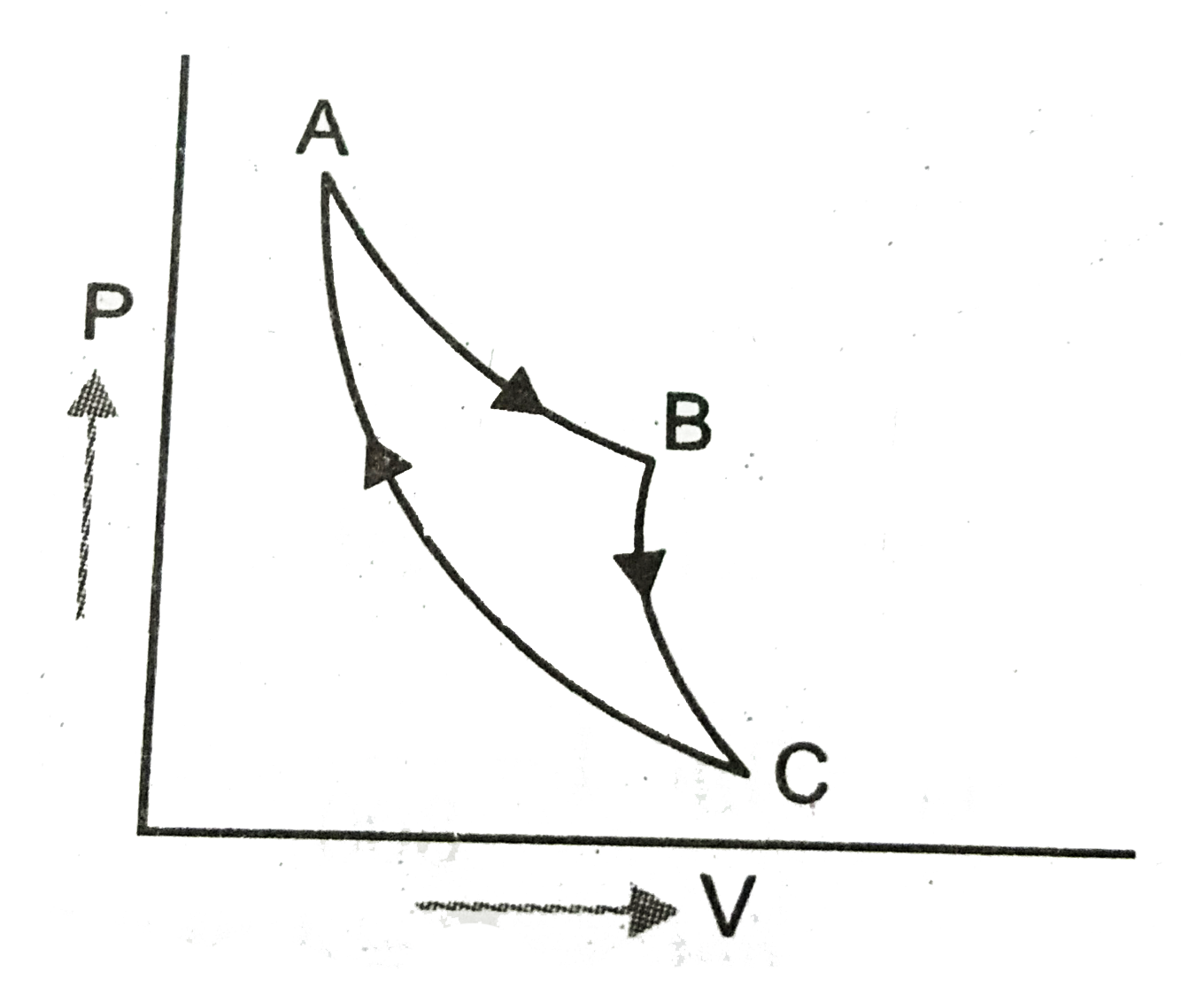When a gas expands along AB, it does 500J of work and absorbs 250 J of heat. When the gas expands along AC, it does 700J of work and absorbs 300J of heat.

(a) How much heat does the gas exchange along Bc?
(b) When the gas makes the transition from C to A along CDA, 800J of work are done on it from C to D. How much heat does it exchange along CDA?
The correct Answer is:A, B, D
(a) UC−UA along two paths should be same.
∴ (QAB+QBC)−(WAB+WBC)=QAC−WAC
∴ (250+QBC)−(500+0)=300−700
Solving, we get
QBC=−150J
(b) QCDA=(WCD+WDA)+(UA_UC)
=(−800+0)−(UC−UA)
=−800−(300−700)
=−400J
Topper's Solved these Questions
- LAWS OF THERMODYNAMICSBook:DC PANDEYChapter:LAWS OF THERMODYNAMICSExercise:Level 2 Single Correct
Explore 27 Videos
- LAWS OF THERMODYNAMICSBook:DC PANDEYChapter:LAWS OF THERMODYNAMICSExercise:Level 2 More Than One Correct
Explore 6 Videos
- LAWS OF THERMODYNAMICSBook:DC PANDEYChapter:LAWS OF THERMODYNAMICSExercise:Level 1 Objective Questions
Explore 1 Video
- LAWS OF MOTIONBook:DC PANDEYChapter:LAWS OF MOTIONExercise:Medical entrances gallery
Explore 39 Videos
- MAGNETIC EFFECT OF CURRENT AND MAGNETISMBook:DC PANDEYChapter:MAGNETIC EFFECT OF CURRENT AND MAGNETISMExercise:Integer type Questions
Explore 10 Videos
Similar Questions
Knowledge Check
A diatomic gas does 80 J of work when expanded isobarically. The heat given to the gas during this process is
A700JB350JC280JD300JIn the given cyclic process from c to b 40 J heat is exchanged from b to a 130 J heat is exchanged and work done is 80 J from a to c, 400 J heat is exchanged, then:
 AWork done in process a to c is 310 JBNet work done in cycle is 230 JCNet change in internal energy in cycle is 130 JDEfficiency of cycle 57.5%
AWork done in process a to c is 310 JBNet work done in cycle is 230 JCNet change in internal energy in cycle is 130 JDEfficiency of cycle 57.5%
An ideal gas expands isothermally along AB and does 700J of work. How much heat does the gas exchange along AB? The gas then expands adiabarically along BC and does 400J of work. When the gas returns to A along CA, it exhausts 100J of heat to the surroundings. How much work is done on the gas along this path?

View SolutionWhen a system is taken from state A and B along the path ACB, 80J of heat flows into the system
and the system does 30 J of work .
(a) How much heat flows into the system along path ADB if the work done by the system is 10?
(b) When the system is returned from state B to A along curved path,
the work done on the system is 20J. Does the system absorb or liberate heat, and how much ?
(c) If UD−UA=40J, find the heat absorbed in the process AD and DB

View SolutionA heat engine absorbs 300J of heat at 627∘C and rejects a part of it at 27∘C. Find the work done by the engine.
View SolutionA system does 200 J of work and at the same time absorbs 150 J of heat. The magnitude of the change in internal energy is __________ J. (Nearest integer)
View SolutionA diatomic gas does 100 J of work when it is expanded isobarically. The heat given to the gas during this process is
View SolutionWhen a system goes from state A to state B, it is supplied with 400 J of heat and it does 100 J of work.
(a) For this transition, what is the system's change in internal energy?
(b) If the system moves from B to A, what is the change in internal energy?
(c) If in moving from A to B along a different path in which W′AB=400J of work is done on the system, how much heat does it absorb?
View Solution